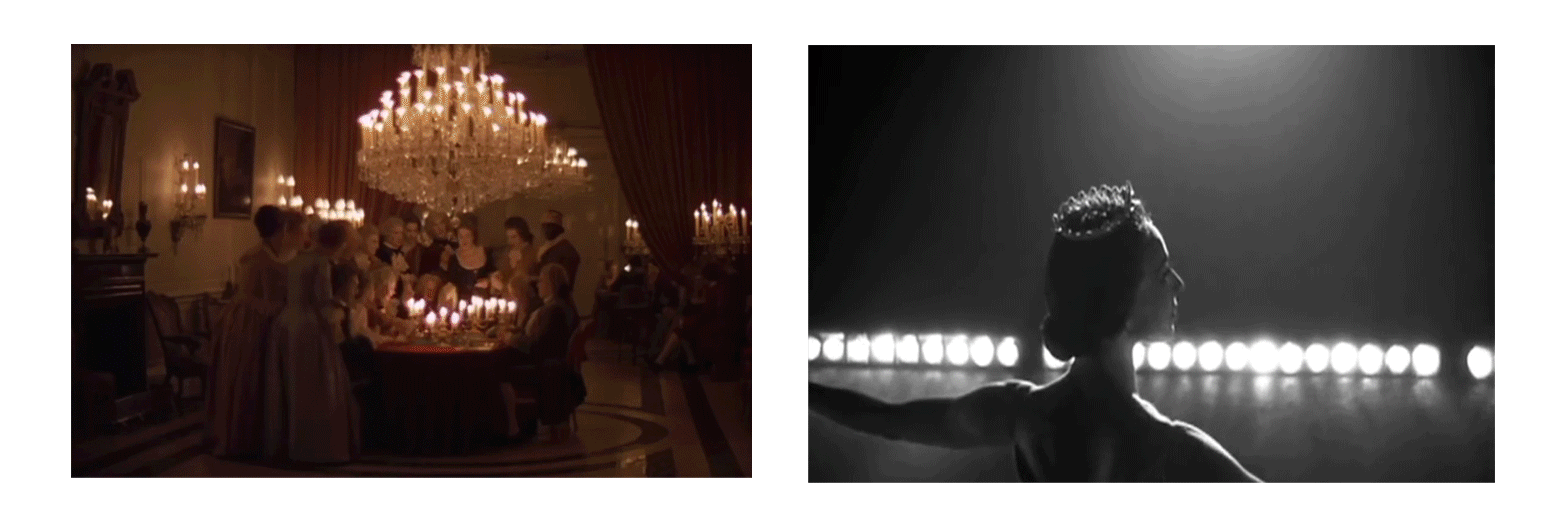Stanley Kubrik: Practical Lighting

Watching a Stanley Kubrik film is an experience unlike any other. As a director, Kubrik had an arsenal of frequently used techniques and tools that spanned his entire body of work including symmetrical framing, tracking shots, zooms and even a reoccurring character look coined “The Kubrik Stare”.
But in this post I want to explore a stylistic choice that isn’t always referenced when considering Kubrik’s catalog of films: Practical Lighting.

Practical lights are light sources visible within the frame that also function in lighting the scene. They can include lamps, strings lights, candles, the headlights of car… Pretty much any prop you can think of that emits light, the options are endless.
Now Kubrik wasn’t the first director to utilize practical lights in his films but I believe he helped popularize the aesthetic. Up until that point, the standard method of lighting during the Golden Age of Hollywood had been the “three point system” arching back to stage and photography techniques. In this system the subject is surrounded by three off-camera lights:

The key light is the principal and often brightest light shining directly on the subject.

The filler light also shines on the subject but from a side angle in order to reduce harsh shadows created by the key light.

And finally the back light which shines on the back of the subject in order to separate the subject from the background.

So why was this lighting method the industry norm?
Let’s take a look at a scene from George Cukor’s The Philadelphia Story. Our stars Katharine Hepburn and Jimmy Stewart are engulfed in a flattering almost heavenly light that accentuates their beauty and also gets clarity to their surroundings but if we look closer we notice that nothing about this lighting is natural.

There are zero shadows on our star faces, additional off-camera lights are used to make the actors eyes and wardrobe twinkle but where is the source of light within the story? From an audience perspective we see nothing in the wide shot, there are no visible lamps or string lights. It must be coming from the moon up above but that doesn’t explain how both Hepburn and Stuart’s characters can be perfectly lit when facing different directions. Something should be in the shadow, it doesn’t add up; there’s a false perception to the picture.
In the early 1960’s the classic Hollywood era was coming to an end and in its place a new generation of filmmakers were looking to step out of the studio sound stages and inject a dose of realism into their films. Kubrik was famously known for his painstaking and often obsessive use of realism in his films. Let’s just disregard the fact that near the end of his life Kubrik hated leaving his home in England so much that he recreated Full Metal Jacket’s Vietnam and Eyes Wide Shut’s New York City in and outside of London.

There are countless reasons to use practical lights but the main one is how it helps the audience suspend their disbelief. If the lighting is unbelievable it will distract and take the audience out of the story.
Here’s a scene from The Killing, the lighting is overtly different from the previous brightly lit scene from The Philadelphia Story. There’s nothing glamorous or romantic about this scene, instead it’s ominous and claustrophobic. Notice how some of the actors even disappear into the background.

In Eyes Wide Shut, Kubrik was able to use scattered practical lights to establish our location and give spatial recognition to the scene; the lighting provides depth, separating the foreground from the background action. There’s clarity which allows the audience to soak in a lot of information instantly.

The use of practical lights has become common practice amongst working directors and cinematographers today. But that’s largely and thanks to director Stanley Kubrik who rebelled against the romantic rose colored lenses of classic Hollywood that perhaps portrayed life as we wish it were and instead capture life with all its darkness and shadows as it actually is.

Is there something about cinematography that caughts your eye but you're not sure about how it works? Leave me a comment and I might cover it next.
See you in the next post!

I saw full metal jacket in middle school at church. Stanley knows how to work those lights to tell a story.
You're right! It's a great film, the use of fire as a practical light through the movie is one of the factors that spark this post.